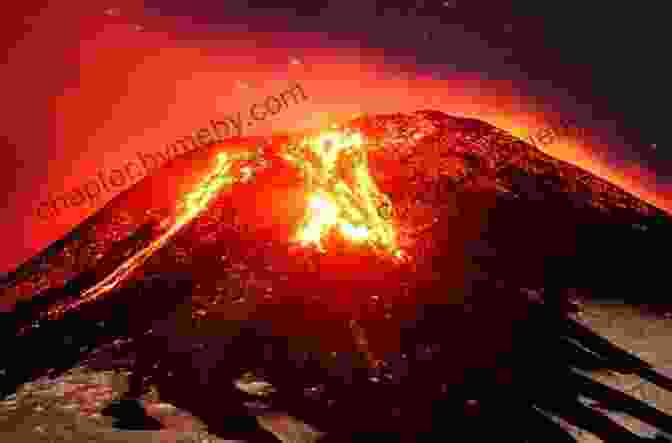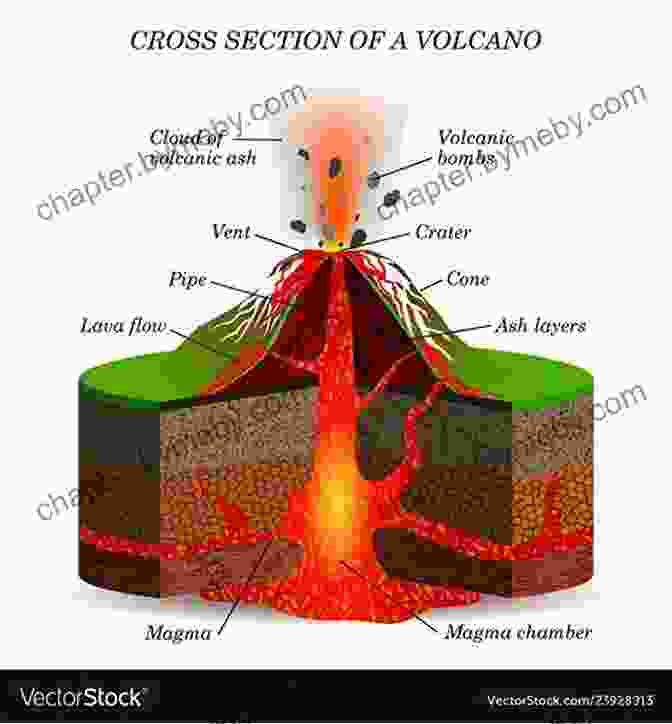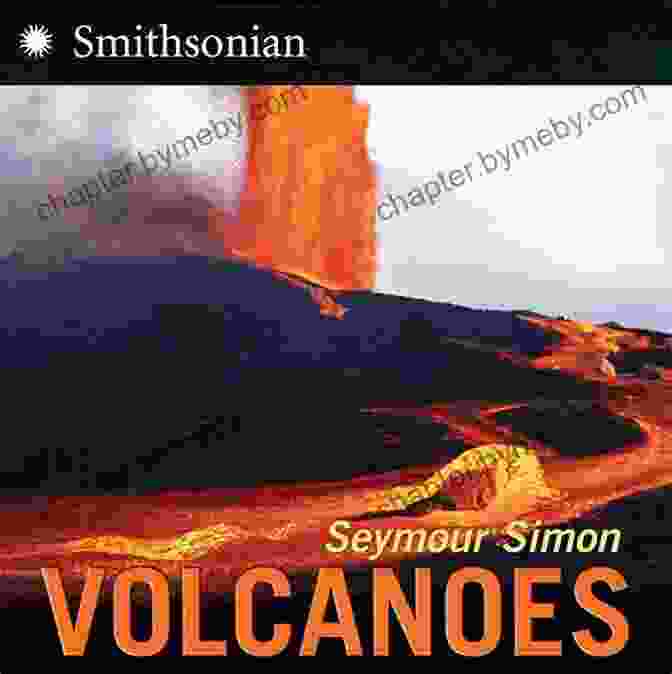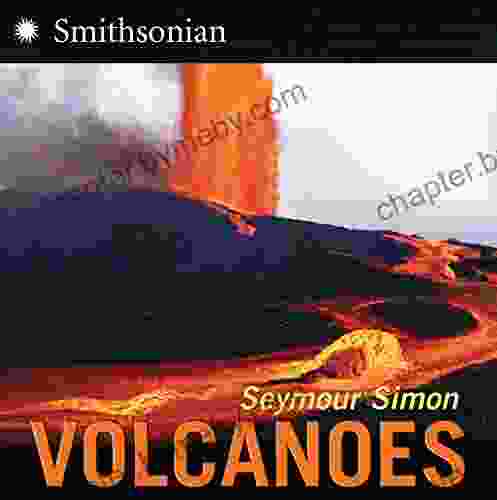Unleash the Fiery Fury: Delve into the Explosive World of Volcanoes

Prepare to witness the awe-inspiring spectacle of nature's fiery creations as we explore the fascinating realm of volcanoes. In Volcanoes: Smithsonian Science by Seymour Simon, embark on an unforgettable journey into the heart of these geological wonders, uncovering their explosive secrets and unraveling the captivating story of their formation, behavior, and impact.

4.6 out of 5
| Language | : | English |
| File size | : | 4233 KB |
| Screen Reader | : | Supported |
| Print length | : | 32 pages |
The Genesis of a Volcano
Volcanoes, majestic natural wonders, are born from the hidden depths of our planet, where molten rock, known as magma, resides. As magma rises through cracks in the Earth's crust and accumulates beneath the surface, it creates a chamber called a magma chamber. Over time, as more magma accumulates, pressure builds within the chamber, eventually leading to an eruption.
The type of eruption that occurs depends on the composition of the magma and the amount of gas dissolved within it. When magma is highly viscous, it moves slowly, resulting in explosive eruptions. In contrast, less viscous magma flows more easily, producing gentler eruptions.
Unveiling the Anatomy of a Volcano
Volcanoes exhibit a diverse range of structures, each with unique characteristics. Cinder cones, small and steep in shape, are formed by the accumulation of cinders and ash. Shield volcanoes, broad and gently sloping, are created by the eruption of low-viscosity lava that flows smoothly over long distances.
Stratovolcanoes, also known as composite volcanoes, are the most common type. They consist of alternating layers of lava and ash, giving them a steep and conical shape. Calderas, vast depressions formed by the collapse of a volcano's summit, offer a glimpse into the heart of these geological behemoths.

The Eruptive Spectrum: A Symphony of Fire
Volcanic eruptions manifest in a mesmerizing array of forms, each carrying its own explosive signature. Effusive eruptions, characterized by the gentle flow of lava, create mesmerizing rivers of fire that illuminate the night sky. Strombolian eruptions produce rhythmic bursts of lava and ash, resembling a celestial fireworks display.
Vulcanian eruptions, more explosive in nature, eject large fragments of lava and ash high into the atmosphere. Plinian eruptions, the most violent of all, send towering columns of ash and gas into the stratosphere, casting a blanket of darkness over vast areas. The aftermath of an eruption can be equally compelling, with volcanic ash transforming into fertile soil, giving life to lush vegetation.
The Impact of Volcanoes: A Force to Behold
Volcanoes, while awe-inspiring, possess immense power that can shape the environment and human history.
Ecological Impact
Volcanic eruptions can dramatically alter ecosystems, destroying vegetation and disrupting food chains. However, they can also create new land, provide nutrients for plant growth, and foster unique habitats for diverse species.
Human Impact
Throughout history, volcanoes have both benefited and threatened human populations. The fertile volcanic soils have nourished agriculture, while eruptions have caused devastating disasters, burying cities and displacing communities.
Volcanology: Unraveling the Secrets of Fire
Volcanology, the study of volcanoes, plays a crucial role in understanding these geological wonders and mitigating their potential hazards. Scientists utilize a range of techniques, including seismic monitoring, gas analysis, and satellite remote sensing, to study volcanoes and predict eruptions.

: A Majestic Dance with Nature
Volcanoes: Smithsonian Science by Seymour Simon offers a captivating journey into the realm of these fiery wonders, illuminating their formation, behavior, and impact. Through vivid descriptions and stunning imagery, this book invites readers to witness the awe-inspiring beauty and raw power of nature's most explosive creations. As we delve into the fascinating world of volcanoes, we gain a deeper appreciation for the dynamic forces that shape our planet, fostering a profound respect for the delicate balance between humanity and nature.
4.6 out of 5
| Language | : | English |
| File size | : | 4233 KB |
| Screen Reader | : | Supported |
| Print length | : | 32 pages |
Do you want to contribute by writing guest posts on this blog?
Please contact us and send us a resume of previous articles that you have written.
 Book
Book Novel
Novel Page
Page Chapter
Chapter Text
Text Story
Story Genre
Genre Reader
Reader Library
Library Paperback
Paperback E-book
E-book Magazine
Magazine Newspaper
Newspaper Paragraph
Paragraph Sentence
Sentence Bookmark
Bookmark Shelf
Shelf Glossary
Glossary Bibliography
Bibliography Foreword
Foreword Preface
Preface Synopsis
Synopsis Annotation
Annotation Footnote
Footnote Manuscript
Manuscript Scroll
Scroll Codex
Codex Tome
Tome Bestseller
Bestseller Classics
Classics Library card
Library card Narrative
Narrative Biography
Biography Autobiography
Autobiography Memoir
Memoir Reference
Reference Encyclopedia
Encyclopedia Mary E Demuth
Mary E Demuth Michael Burnette
Michael Burnette Sadie Radinsky
Sadie Radinsky Missy Jainey Misoue
Missy Jainey Misoue Michael Pasquier
Michael Pasquier Sue Hiepler
Sue Hiepler Mary Jackson
Mary Jackson Max Eisen
Max Eisen Michael Cleverly
Michael Cleverly Matteo Cossu
Matteo Cossu Melissa Myles
Melissa Myles Michael Reist
Michael Reist Megan Miller
Megan Miller Shaun Chamberlin
Shaun Chamberlin Paul Barry
Paul Barry Nicola Accialini
Nicola Accialini Mary Ann Hogan
Mary Ann Hogan Kindle Edition
Kindle Edition Meredith Badger
Meredith Badger Melinda Buckwalter
Melinda Buckwalter
Light bulbAdvertise smarter! Our strategic ad space ensures maximum exposure. Reserve your spot today!
 Aubrey BlairFollow ·17.6k
Aubrey BlairFollow ·17.6k Manuel ButlerFollow ·3.2k
Manuel ButlerFollow ·3.2k Bruce SnyderFollow ·7.3k
Bruce SnyderFollow ·7.3k Philip BellFollow ·19.5k
Philip BellFollow ·19.5k Gerald ParkerFollow ·17.8k
Gerald ParkerFollow ·17.8k DeShawn PowellFollow ·12.3k
DeShawn PowellFollow ·12.3k Samuel BeckettFollow ·13.3k
Samuel BeckettFollow ·13.3k Henry HayesFollow ·11.6k
Henry HayesFollow ·11.6k

 Henry James
Henry JamesCold War Fighter Pilot Story: A Captivating Tale of...
Enter the Cockpit of...

 Rudyard Kipling
Rudyard KiplingYour Body Your Baby Your Choices: The Essential Guide to...
Pregnancy and...

 Fabian Mitchell
Fabian MitchellMichelle Obama: An Intimate Portrait - A Must-Read for...
Michelle Obama is a prominent figure in...

 Juan Butler
Juan ButlerUncover the Secrets of the Dead Land Warshawski Novels
Prepare to delve...
4.6 out of 5
| Language | : | English |
| File size | : | 4233 KB |
| Screen Reader | : | Supported |
| Print length | : | 32 pages |
















